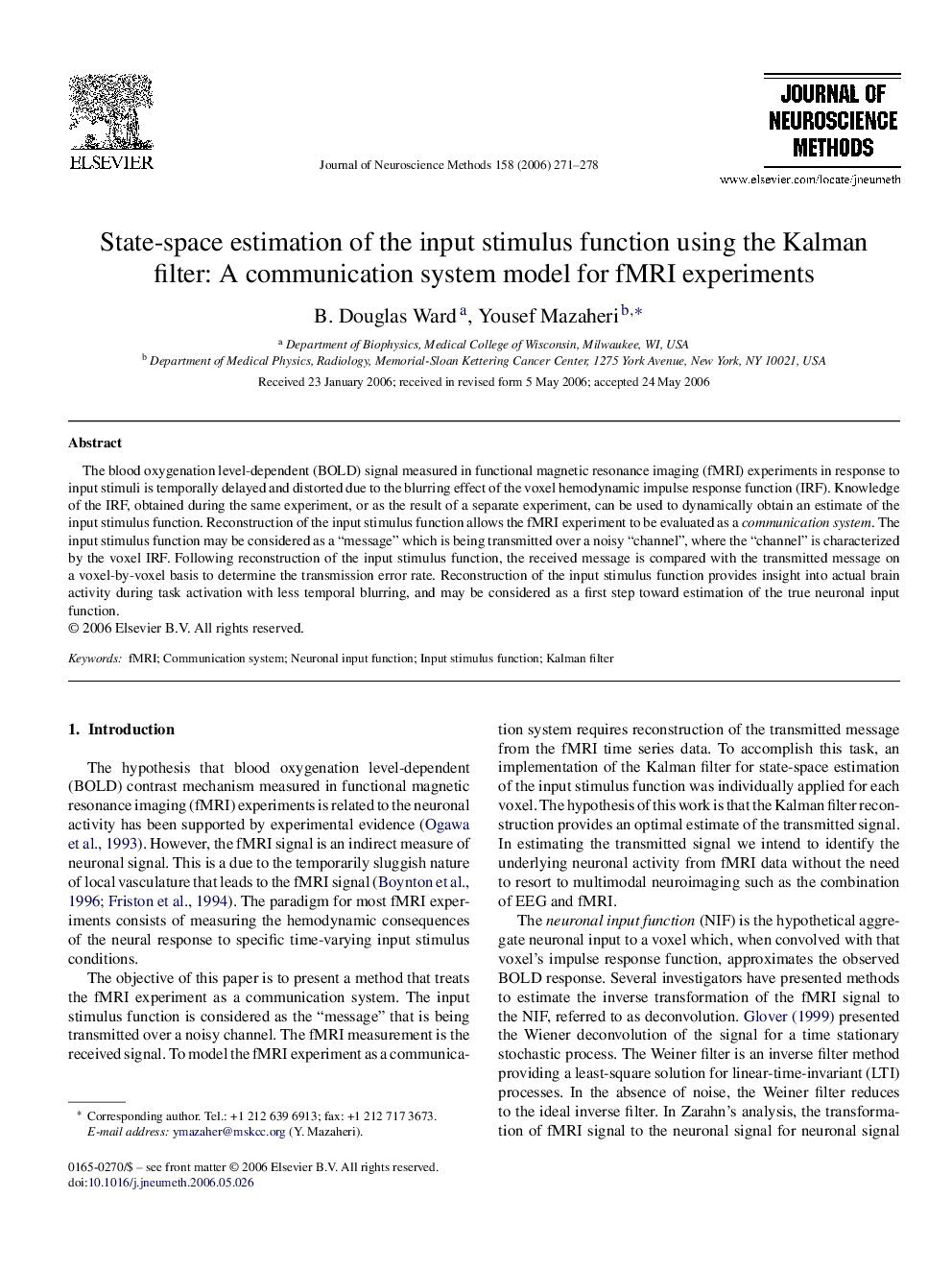| Article ID | Journal | Published Year | Pages | File Type |
|---|---|---|---|---|
| 6270585 | Journal of Neuroscience Methods | 2006 | 8 Pages |
Abstract
The blood oxygenation level-dependent (BOLD) signal measured in functional magnetic resonance imaging (fMRI) experiments in response to input stimuli is temporally delayed and distorted due to the blurring effect of the voxel hemodynamic impulse response function (IRF). Knowledge of the IRF, obtained during the same experiment, or as the result of a separate experiment, can be used to dynamically obtain an estimate of the input stimulus function. Reconstruction of the input stimulus function allows the fMRI experiment to be evaluated as a communication system. The input stimulus function may be considered as a “message” which is being transmitted over a noisy “channel”, where the “channel” is characterized by the voxel IRF. Following reconstruction of the input stimulus function, the received message is compared with the transmitted message on a voxel-by-voxel basis to determine the transmission error rate. Reconstruction of the input stimulus function provides insight into actual brain activity during task activation with less temporal blurring, and may be considered as a first step toward estimation of the true neuronal input function.
Related Topics
Life Sciences
Neuroscience
Neuroscience (General)
Authors
B. Douglas Ward, Yousef Mazaheri,
